Air IL Stroke Change
May 2023 orig.
Recommendations and Warnings
Cane Creek recommends only trained suspension technicians perform service on all suspension, using all required tools and following all proper procedures. Anyone without access to the proper equipment or with any concerns on the procedures should defer to an authorized Cane Creek service center for service. Improper service can result in loss of performance or suspension failure. All Cane Creek shocks have pressurized nitrogen and oil, even coil shocks. Follow the service procedures exactly as written to avoid possible injury or harm to the suspension. Always wear eye protection while performing suspension service.
Please dispose of all waste products and materials through proper channels to avoid contamination of the environment.
Any damage or issues resulting from improper service will not be covered by warranty. If you have a shock still in its original warranty period and do not wish to void your warranty, please contact an authorized Cane Creek service center.
These service instructions cover the basic service procedures using standard service kits. If your suspension requires parts beyond standard replacement parts – shaft, damper tubes, end eyes – please consult your authorized Cane Creek service center or contact us at our Cane Creek Support Center.
Service Notes
This service covers changing stroke ONLY on a new Air IL shock. As o-rings are considered new as part of this service, they will not be replaced. If this stroke change is being done on an older shock, a full 100 hour service is recommended.
The stroke change procedure is the same for Standard and Trunnion mount shocks. Images of both are used interchangeably here.
Service Kits
No service kits required. If reducing stroke, 2.5mm stroke reduction pucks (AAD2578) are required.
Required Cane Creek Tools
BCD0344 – Kitsuma/DBair/DBair IL Air Seal Head Tool
Additional Tools & Supplies
1/2″ crowfoot wrench
Torque wrenches
Pick
Suspension Grease
Royal Purple 10w-30 Oil
Torque, Loctite, Oil & Nitrogen Specs
Torque & Loctite Chart
| Part | Torque Spec | Loctite Spec |
|---|---|---|
| Inner Air Can/Air Seal Head | 22.6 Nm | None (PolyLube) |
Oil Chart
| Oil Location | Oil Type | Oil Amount |
|---|---|---|
| Air Can | Royal Purple 10w-30 | 5 mL |
General Prep




Clean shock. Record tune if desired. Remove hardware. Remove bushings if replacing. Remove valve cap. Bleed air from shock using shock pump. Be sure to depressurize shock slowly to avoid trapping air in the negative chamber.

Hardware & Bushing Removed

Valve Cap Removed

Pump Attach

Air Bleed
Air Spring Disassembly






Step 1 – Outer Air Can Removal
Clamp shock in vise using soft jaws. Remove air can circlip using a pick. Flip the shock in the vise. Using strap wrench, twist and apply downward force to free outer air can. Work outer air can past end eye to remove completely. Note any air volume reduction.

Clamped for Air Can Circlip Removal

Air Can Circlip Removal

Air Can Circlip Removed

Strap Wrench on Air Can

Air Can Freed Past First O-Ring

Air Can Removed
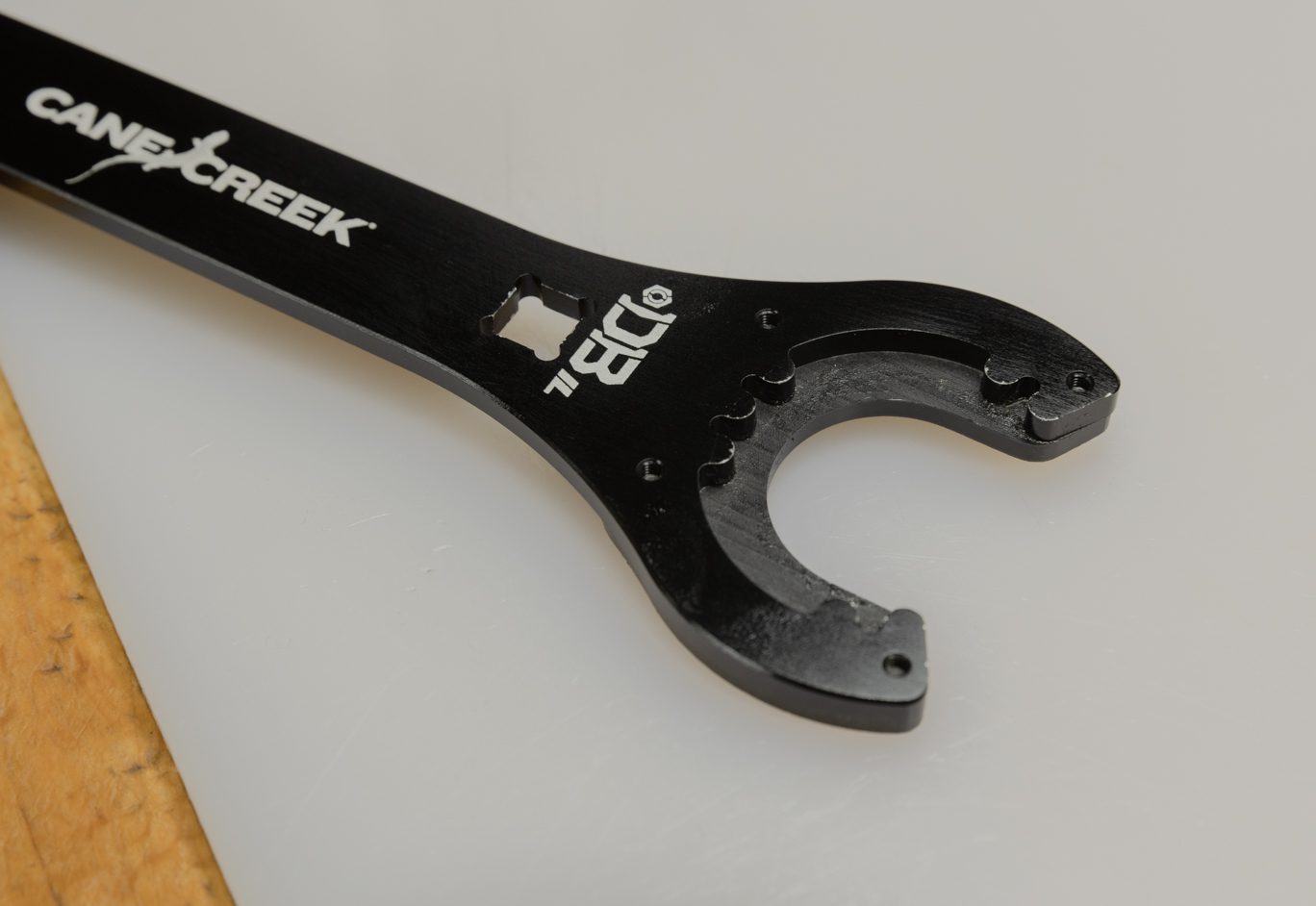




Step 2 - Freeing Inner Air Can
Reclamp shock. Align teeth on Air Seal Head Tool (BAD1273) with grooves on air seal head. Unthread air seal head/inner air can from end eye. Splash oil may be present. Slide inner air cap up shock body to expose shaft.

Air Seal Head Wrench IL End

Air Seal Head Wrench on Air Seal Head

Freeing Inner Air Can from End Eye

Inner Air Can Freed from End Eye 1

Inner Air Can Freed from End Eye 2








Step 3 - End Eye Removal
Slide inner air can up shock body to expose shaft. Clamp shaft in 8mm shaft clamp with end eye up. Remove end eye using 1/2″ crows foot. Pinch & remove then discard inner can o-ring and stop shim from end eye. Remove any stroke reduction spacer, shim and bottom out bumper.
Always use extreme caution when using a pick in this step or others to avoid scratching metal parts. Failure to do this can create scratches in the o-ring glands which cause leak paths for oil or gas. When possible, pinch and remove o-rings rather than using a pick.

Clamped for End Eye Removal

Freeing End Eye

End Eye Removed

End Eye O-Ring Removal

Stop Shim Removal

Stop Shim Removed

Stroke Reduction, Shim & Bottom Out Bumper Removal

Stroke Reduction, Shim & Bottom Out Bumper Removed
Air Spring Reassembly




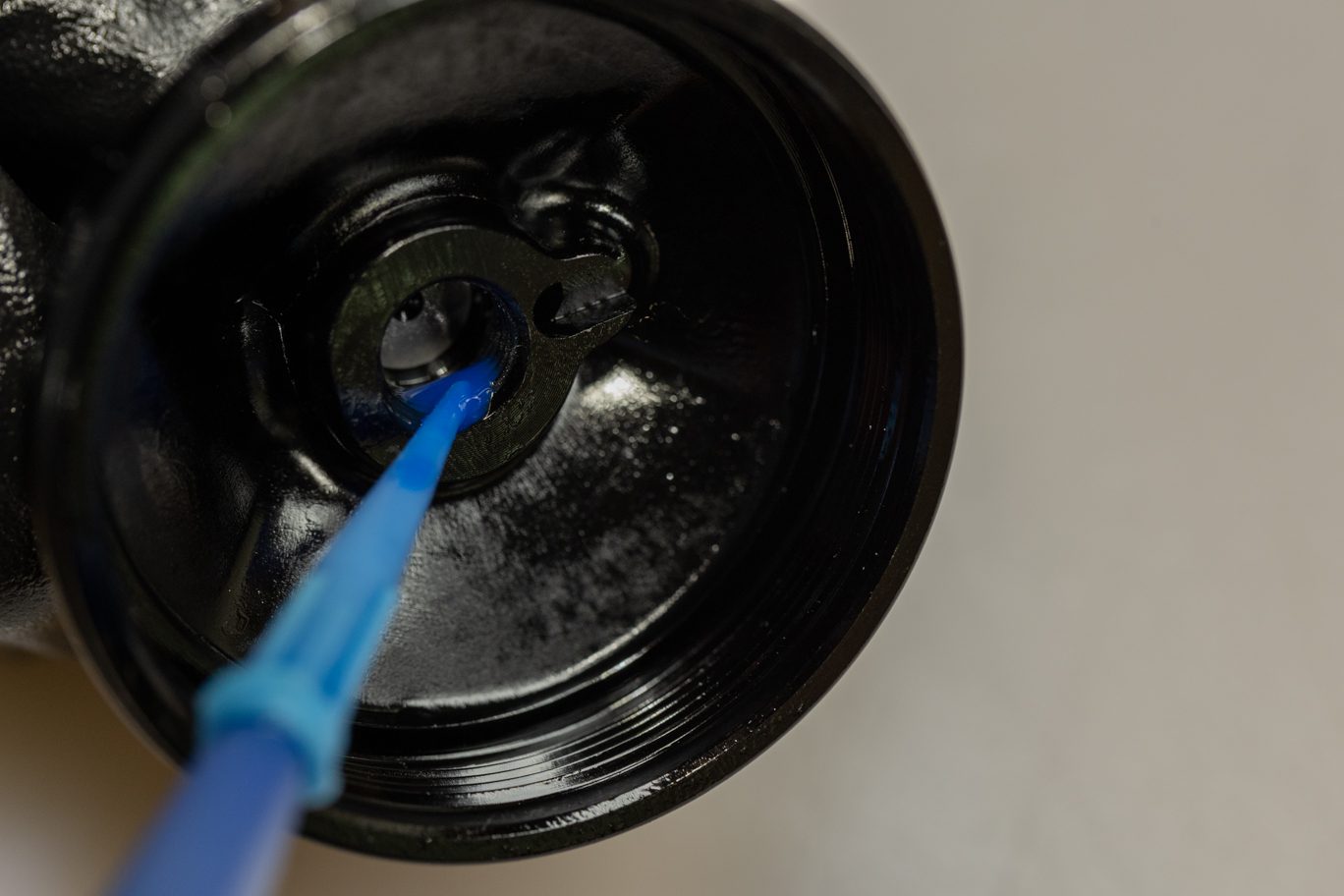



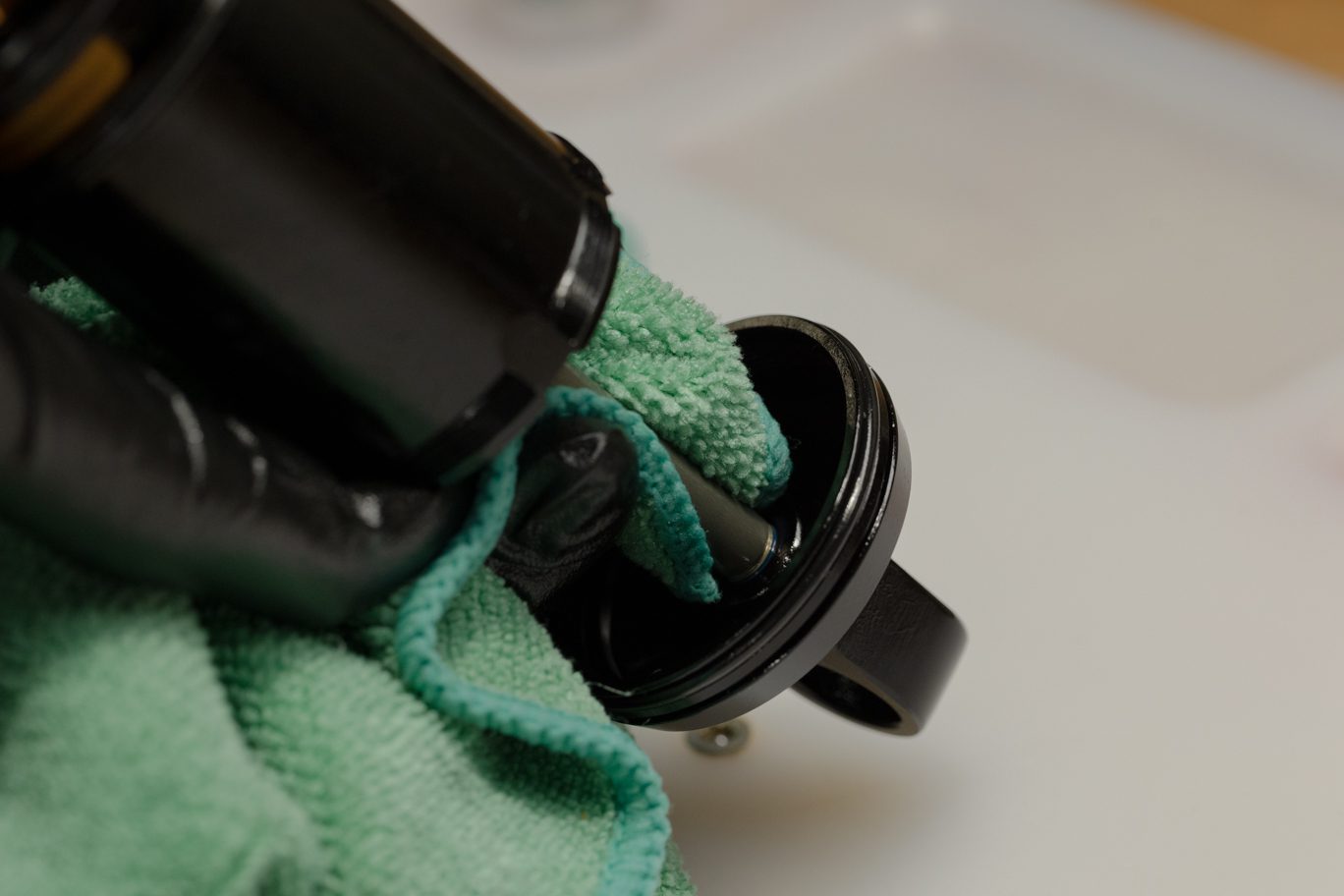
Step 1 – End Eye Install
Reinstall bottom out bumper, shim and stroke reduction (if needed). Apply blue Loctite (243) to shaft threads and end eye threads. Thread end eye onto the shaft. Clamp shaft into vise with shaft clamp allowing space for end eye to clear vise when tightened. Using 1/2″ crowsfoot, torque end eye to 4.8 Nm. Clean any extra Loctite from shaft and end eye.

Bottom Out Bumper Installed

Shim Installed

Stroke Reduction Installed

Applying Loctite to Shaft

Applying Loctite on End Eye

Threading Shaft onto End Eye

Clamping Shaft w/ Ample Space

Torquing End Eye

Cleaning Shaft and End Eye of Loctite
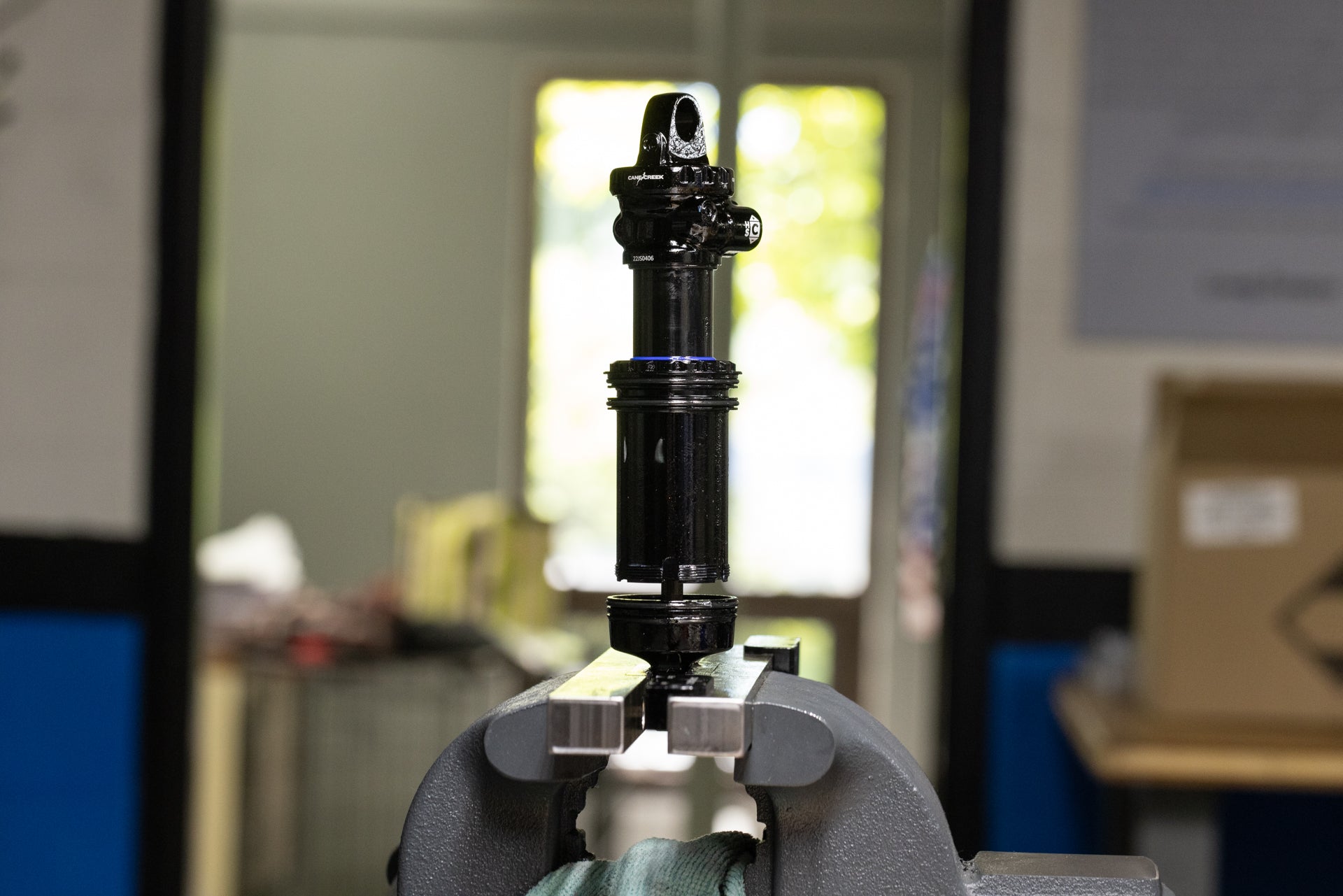
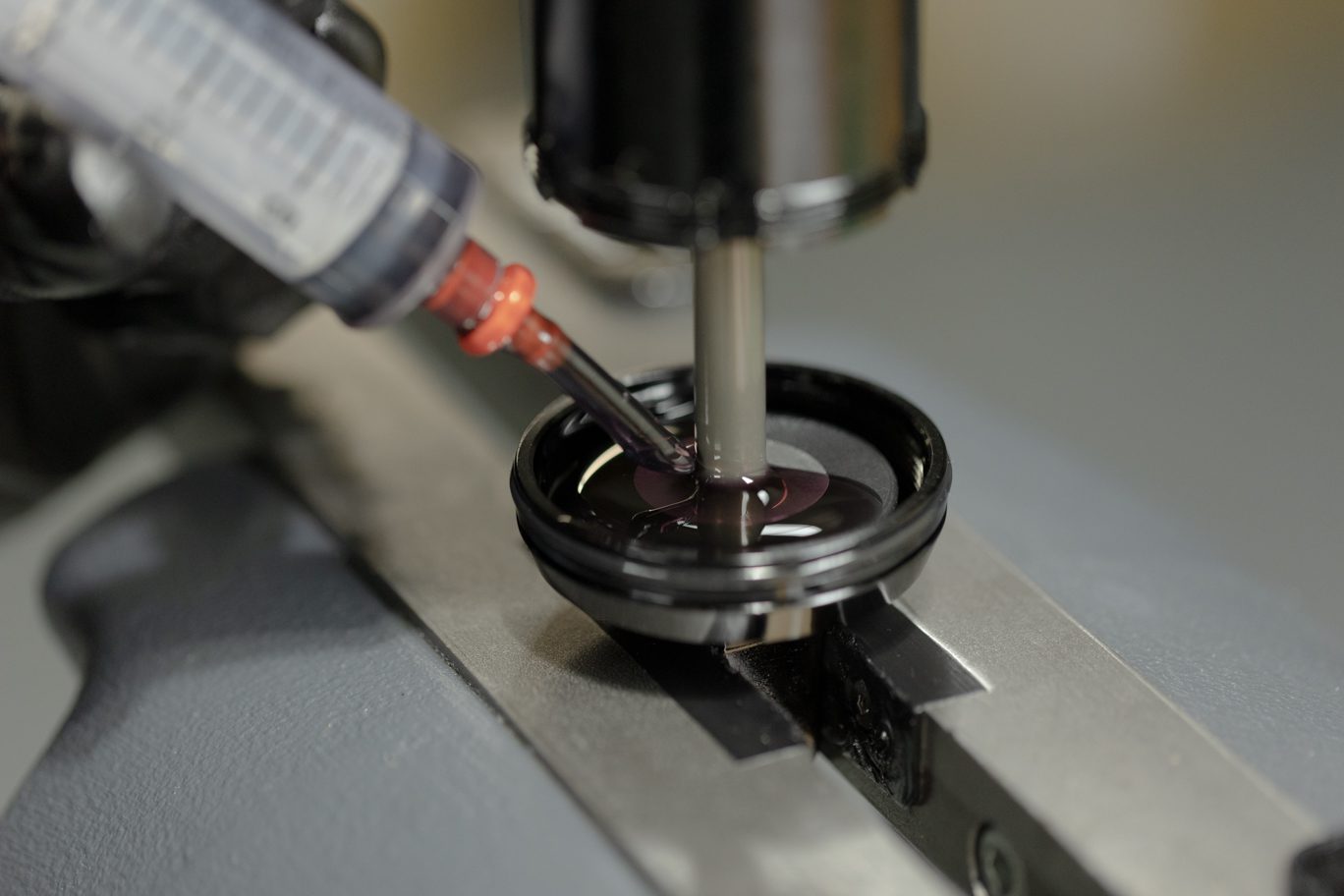
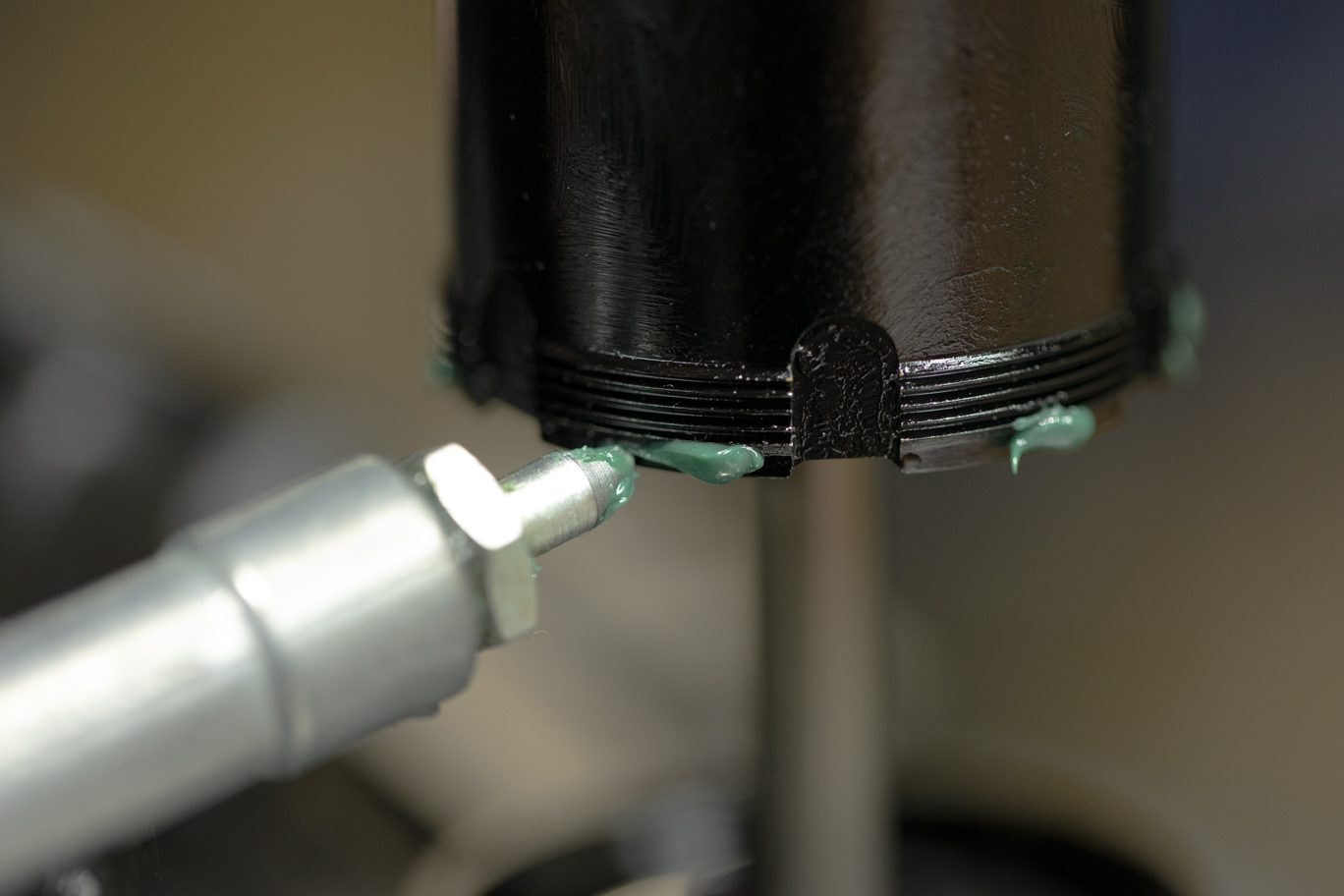


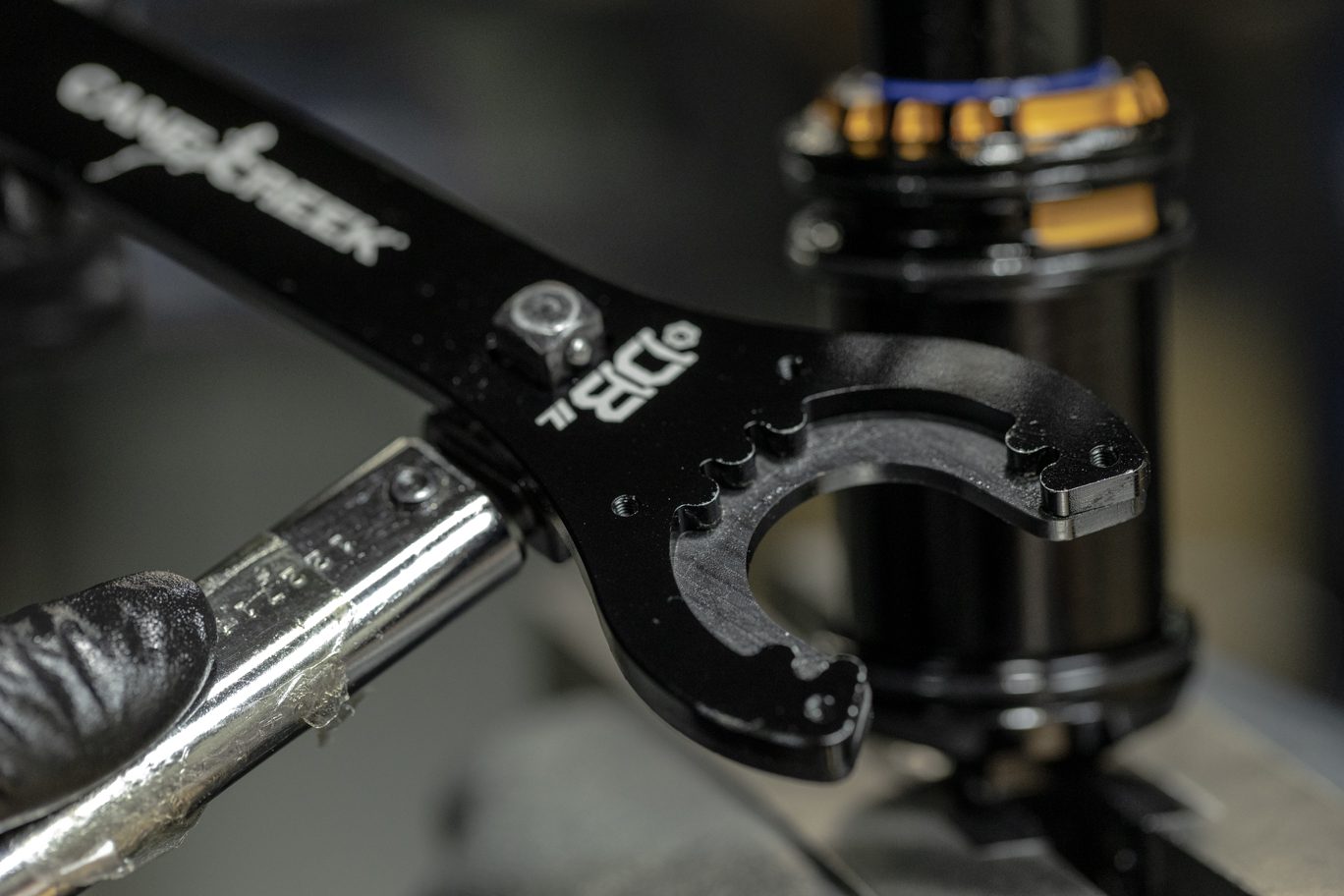

Step 2 – Inner Air Can to End Eye Install
Clamp end eye in vise. Add 5 ml of Royal Purple to end eye. Add PolyLube grease to threads on inner air can. Thread inner air can onto end eye. Torque to 22.6 Nm using Air Seal Head tool.

Clamped for Inner Air Can to End Eye Install

Adding Oil to End Eye

Adding PolyLube to Inner Air Can

Lowering Inner Air Can onto End Eye

Threading Inner Air Can onto End Eye

Air Seal Head Tool

Using Air Seal Head Tool on Inner Air Can


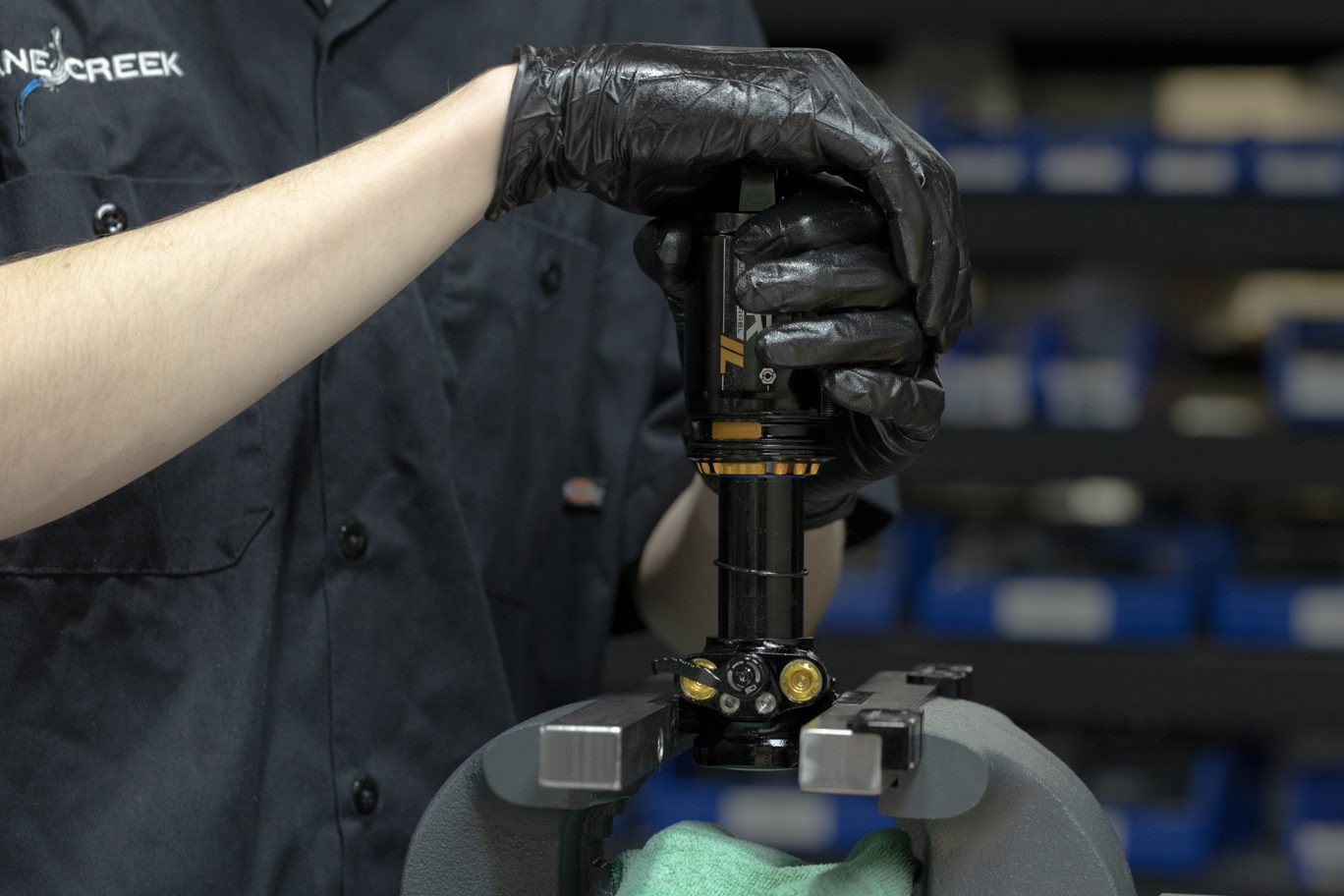

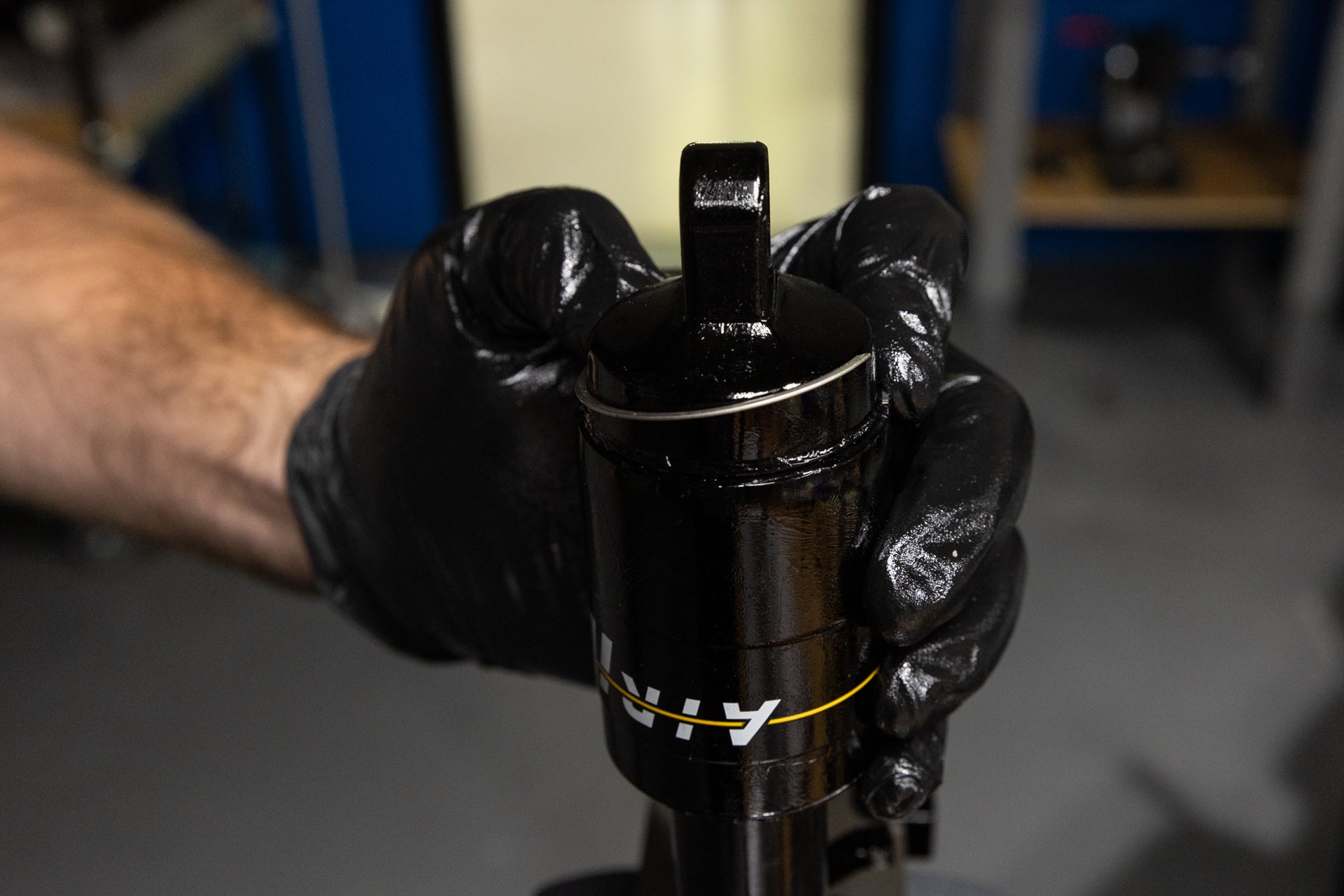

Step 3 – Outer Air Can Install
Clamp valve body end into vise. Work outer air can gently past o-rings. Note correct orientation of air can and reinstall any volume reduction. Final o-ring will be tight. Strap wrench may be necessary. Engage Climb Switch to aid installation. Ensure valve is oriented away from Climb Switch. Install outer air can retention clip.

Shock Clamped (Trunnion)

Outer Air Can Installation 1

Outer Air Can Installation 2

Outer Air Can Installed

Outer Air Can Retention Clip Install

Outer Air Can Retention Clip Installed
Final Testing and Set Up

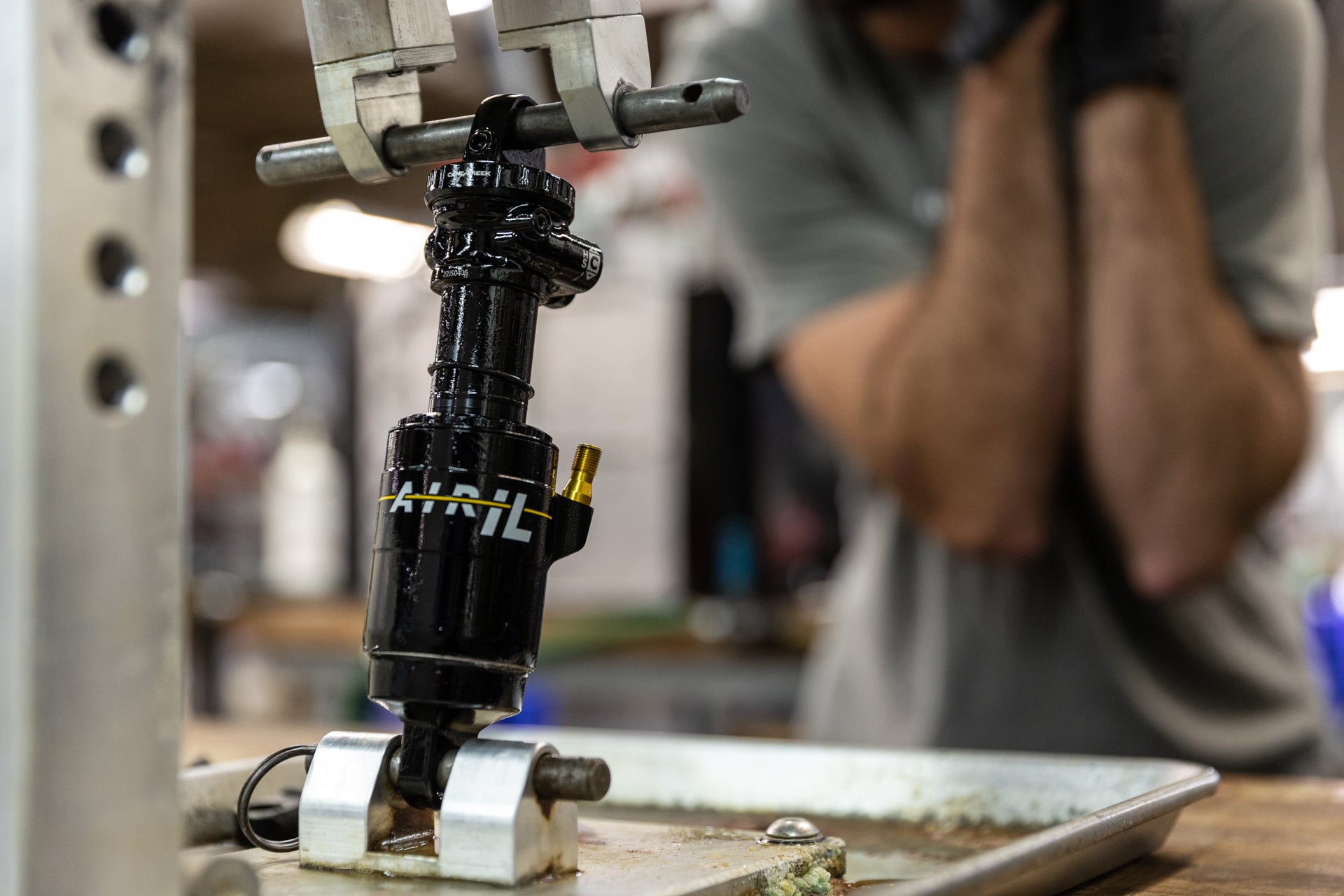





Step 1 – Leak Check
Air up shock to at least 100 psi. On hand dyno or bike frame, slowly cycle shock and listen for negative volume chamber to pressurize. Using soapy water and dunk tank, test for any possible air leaks. Install valve cap.

Airing Up Shock

Shock on Hand Dyno

Soap Test 1

Soap Test 2

Soap Test 3

Soap Test 4

Dunk Test


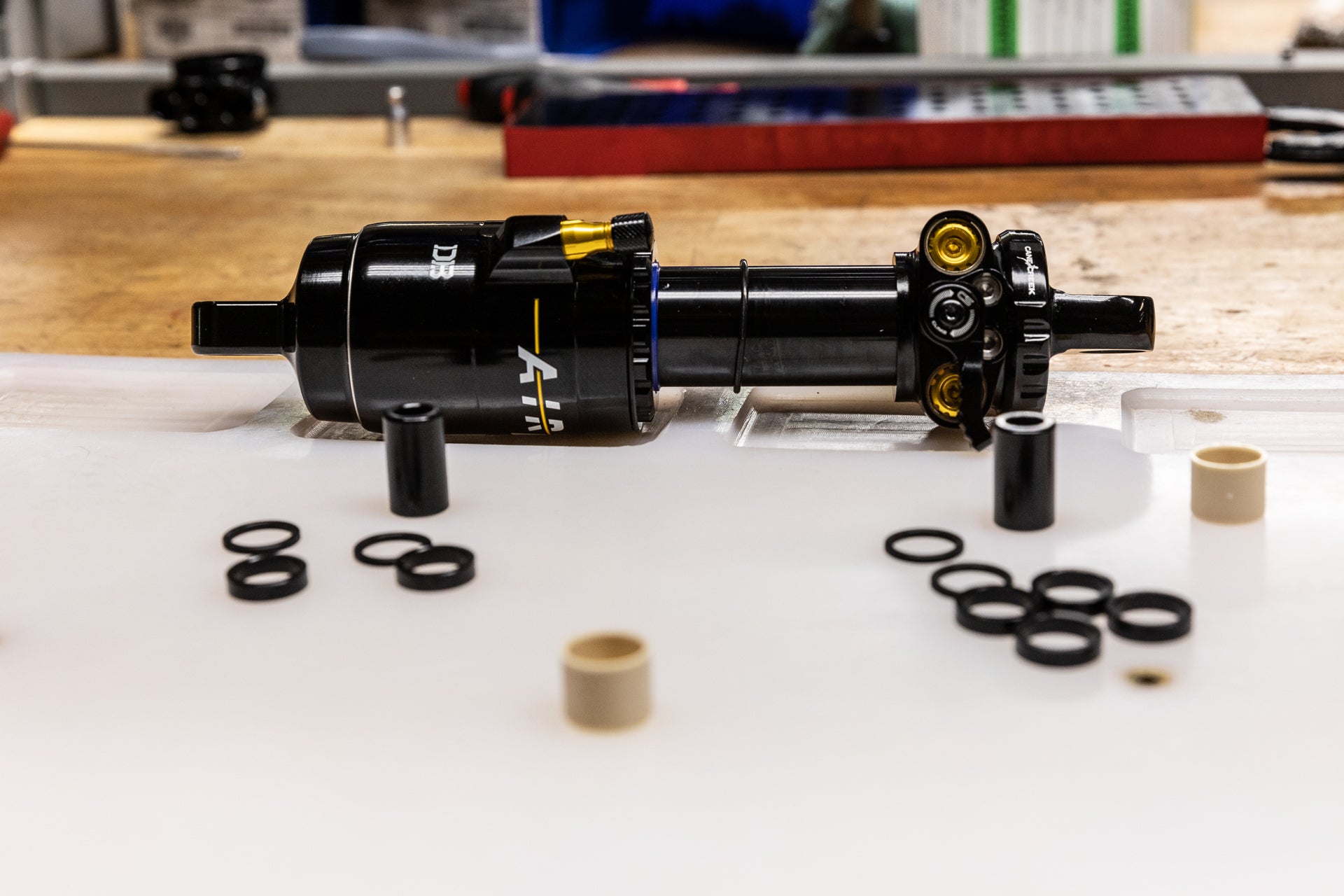
Step 2 – Dyno Test
Set adjusters to factory neutral: HSC & HSR 2.5 turns from full bottom (or 2 turns from full open); LSC 11 clicks from full bottom; LSR 13 from full bottom. Using hand dyno, test shock for function. Ensure Climb Switch engages and operates properly. Turn individual adjusters to test each one. Set back to original tune if desired.
Install any bushings and hardware.

High Speed Adjust

Low Speed Adjust


